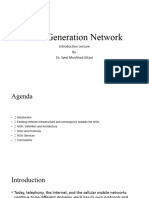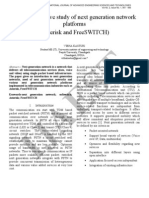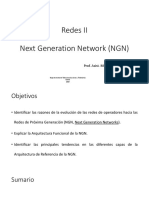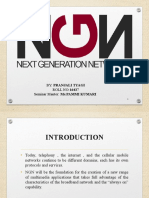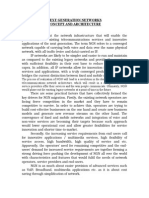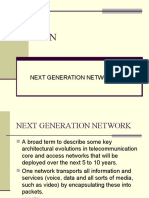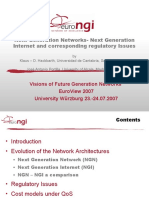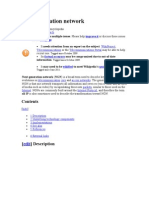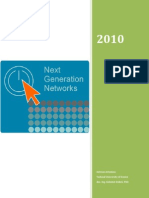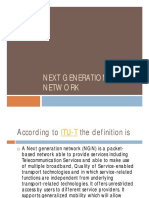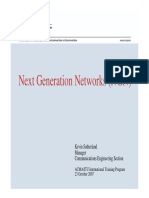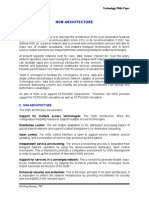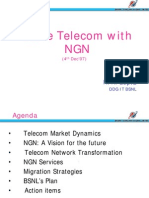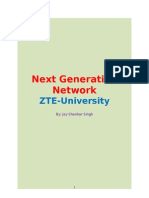0% found this document useful (0 votes)
45 views13 pagesIntroduction of NGN
The document discusses Next Generation Networks (NGN), defining them as packet-based networks that support various telecommunication services and allow for service independence from transport technologies. It outlines the architectural changes required for NGN implementation, examples of NGN deployments in different countries, and the benefits such as cost reduction and new income sources for network operators. Additionally, it highlights the importance of customer benefits, user-friendliness, and the role of ITU in NGN standardization efforts.
Uploaded by
shreyaniture78Copyright
© © All Rights Reserved
We take content rights seriously. If you suspect this is your content, claim it here.
Available Formats
Download as DOCX, PDF, TXT or read online on Scribd
0% found this document useful (0 votes)
45 views13 pagesIntroduction of NGN
The document discusses Next Generation Networks (NGN), defining them as packet-based networks that support various telecommunication services and allow for service independence from transport technologies. It outlines the architectural changes required for NGN implementation, examples of NGN deployments in different countries, and the benefits such as cost reduction and new income sources for network operators. Additionally, it highlights the importance of customer benefits, user-friendliness, and the role of ITU in NGN standardization efforts.
Uploaded by
shreyaniture78Copyright
© © All Rights Reserved
We take content rights seriously. If you suspect this is your content, claim it here.
Available Formats
Download as DOCX, PDF, TXT or read online on Scribd
/ 13


